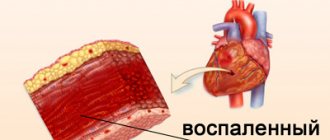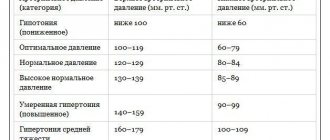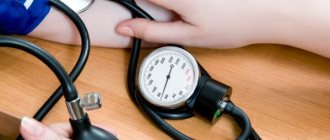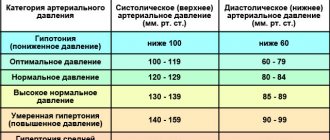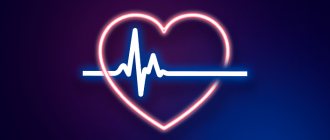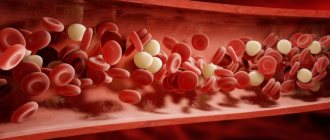Palpitation is a condition in which heartbeats are felt. In the normal rhythm of life they are very difficult to track. Therefore, when such phenomena occur, a person may have concerns about his own health.
To understand in what cases it is necessary to seek help, it is important to be able to distinguish tachycardia from normal palpitations, which may occur due to a combination of certain circumstances.
Tachycardia is an increased heart rate, which reaches 90-100 beats per minute. This disease can be determined by counting a woman's pulse. Palpitations are most often just complaints that do not always depend on the pulse rate.
To find out what the cause is, you need to count your pulse rate and pay attention to the presence of other symptoms. If the pulse rate is between 60-90 beats per minute, the blood pressure is normal and there are no other signs of deterioration in health, this situation does not require special help. If the pulse rate is within normal limits, but there are surges in blood pressure, signs of dizziness, or a state of fainting, then there is a need to seek help from specialists.
Pulse and blood pressure indicators are the main components of normal physical condition. Pressure is the force with which the blood presses on the vessels. Pulse describes the beats of the heart per minute. In adult women, fluctuations in the range of 60-100 beats are considered indicators of a normal heartbeat. Blood pressure is considered normal within 120-80.
The easiest way to determine your heart rate
Measuring the amount of vibration of arterial walls
In order to take measurements and find out the normal pulse
it is necessary to use the palpation method in the following places:
- Armpits.
- Elbow bend.
- Wrists.
- Inner thigh.
- Carotid artery.
- Viska.
Do not measure your heart rate immediately after eating or exercising.
In the morning, when the body is at rest, you need to apply two fingers (index and middle) to the neck, thigh and temple alternately. The beats are counted for 60 seconds. You can use a stopwatch or time yourself.
You can measure the oscillation frequency using a tonometer: this device is intended not only for measuring blood pressure.
how many beats per minute
Changing the number of strokes is possible in the following cases:
- Physical stress on the body.
- Stressful situation, excitement.
- Taking medications.
- Consumption of alcoholic beverages and tobacco products.
- Change in body temperature.
If the number of vibrations becomes less than 50 beats per minute, this indicates the presence of any pathologies. As a rule, a person experiences weakness and nausea. If the number of oscillations is reduced to 35 beats, the brain begins to experience oxygen starvation. Read here and find out why your blood pressure rises.
What does the heart rate show in men?
The number of heart beats per minute, as well as their rhythm, indicate the quality of the cardiovascular system in a man. Heart rate indicators and its features enable an experienced doctor to assess the degree of a person’s health, taking into account his age and gender.
The nature of the heart rhythm indicates possible diseases and differs as follows:
- tachycardia (rapid heartbeat - more than 90 beats/min.). This is a symptom of disorders of the ANS, endocrine system, hemodynamics or other forms of arrhythmia;
- bradycardia (slow heartbeat - less than 50 beats/min.). This is a symptom of changes in the myocardium, increased intracranial pressure, lead or nicotine poisoning, hypothyroidism, fasting, cold, or typhoid fever;
- arrhythmia is a violation of the rhythm and frequency of heart contractions. Indicates heart defects, myocarditis, complications after taking medications, abnormalities in electrolyte balance, poisoning. It is often a consequence of heart failure - a disorder of cardiac activity leading to insufficient blood supply to the organs and tissues of the body.
The number of beats in the male body at rest
If you compare the number of vibrations of the arterial walls per minute in a man and a woman, the values will differ by 10 beats.
First of all, this depends on the different structure of organisms: per kilogram of body weight for a man there is 65 ml of blood, while for a woman this figure is 60 ml. This is explained by the fact that the volume of the male heart is slightly larger than the female organ.
A man's maximum oxygen consumption is also higher, and this has a direct impact on the number of contractions.
What is the normal heart rate per minute for a person
? The resting heart rate of a man in good physical condition reaches 50 beats per minute. Rarely the value may be reduced. This is normal for an athlete's heart.
Characteristic deviations for women
There are 3 characteristic reasons for the deviation of the pulse from the norm in healthy women, which are not always taken seriously by them:
- Excess weight (obesity is an official disease in medicine, which is classified by stages).
- Uterine fibroids (a benign tumor that can sometimes cause certain symptoms when it appears).
- Menopause (during this age period, women experience a natural increase in heart rate).
Excess weight
Fat deposits in the area of the internal organs interfere with the normal movement of the diaphragm, a breathing muscle located between the chest and abdominal cavities. As a result, the depth of breathing decreases. If you are overweight, hypoventilation of the lungs and shortness of breath occur even with light exertion.
To compensate for the lack of oxygen, the heart is forced to work faster to provide blood supply to the body. The closer your body weight is to normal, the better your heart functions.
Uterine fibroids
Another condition characteristic only of women is uterine fibroids. This benign tumor often does not cause any symptoms, but is accompanied by heavy menstruation and becomes the cause of chronic posthemorrhagic anemia.
The disease develops gradually, and the woman does not feel any sudden changes in her well-being. However, a constantly rapid pulse becomes a sign of tension in the cardiovascular system, which works in an enhanced mode to compensate for the lack of oxygen in the blood.
Climax
During menopause, women often experience rapid heartbeats, significant changes in blood pressure, sweating, and pain in the heart. Many people do not pay attention to this and do not get treatment. However, modern gynecology offers many means to improve well-being during this period. You shouldn't refuse this opportunity.
A deviation of the pulse from normal values in women can be an early or even the only external sign of many diseases. Paying close attention to your health and regularly measuring this indicator will help you recognize dangerous diseases at an early stage, when their course is reversible.
Number of beats in the female body at rest
How long does a person have a normal pulse?
? The female body is structured differently: at rest, the number of vibrations of female arteries varies from 60 to 70 beats per minute.
A woman’s pulse is influenced by hormonal levels, which change at the beginning of the menstrual cycle. In the first phase, at rest, a woman’s pulse is 10 beats per minute. This value is typical for the third phase of the cycle.
Menopause is a physiological phenomenon that is also reflected in the number of oscillations of the arteries: at rest, the number of beats reaches 80 - this is the normal number of beats per minute of the heart
. During pregnancy, the heart rate also changes: an increase in beats is observed (+10 to the average value at rest).
Prevention of rare pulse
Preventive measures boil down to timely treatment of organic heart lesions, elimination of the effects of toxic substances on the myocardium, competent selection of doses of pharmacological drugs and their administration under medical supervision. Don't forget to make regular preventive visits to your therapist and cardiologist.
Make an appointment with CELT specialists and find out the reasons for your rare pulse without delay.
Make an appointment through the application or by calling +7 +7 We work every day:
- Monday—Friday: 8.00—20.00
- Saturday: 8.00–18.00
- Sunday is a day off
The nearest metro and MCC stations to the clinic:
- Highway of Enthusiasts or Perovo
- Partisan
- Enthusiast Highway
Driving directions
Possible reasons for deviations of the pulse value from the established norm
The most common reasons affecting the change in the number of strokes are:
- Physical stress on the body.
- Regular exercise.
- Sexual intercourse.
- Feeling very hungry.
- Oversaturation of the body.
- Stressful situation.
- Drinking alcoholic beverages.
- Drug use.
- Use of tobacco products.
- The beginning of a woman's menstruation.
- A course of massage or other procedures that relax the body.
reasons for abnormal heart rate
Why do you need to measure your pulse?
Measuring your pulse is a fairly accurate way to assess the condition of your blood vessels and heart. Both excessive deceleration and strong acceleration of the heart rate lead to insufficient blood ejection into the aorta and the appearance of oxygen deficiency. This condition is manifested by shortness of breath, weakness, sweating, dizziness, and a feeling of chilly limbs.
Therefore, before visiting a doctor, it is recommended to regularly measure your pulse for several days and record it, indicating the time and degree of activity:
- in a dream;
- at rest;
- while walking;
- when climbing stairs and so on.
This will help the specialist understand how pronounced the abnormalities in the functioning of the heart are, because some pathologies in the body can manifest themselves, for example, only during sleep, and others when climbing a flight of stairs.
By giving your body a load, you can determine your level of physical fitness and calculate your heart rate to increase endurance:
- when running and swimming;
- cycling;
- exercises in the gym and so on.
Women's heart rate is on average higher than men's. This is due to the peculiarities of the nervous and hormonal regulation of the heart.
The number of pulse waves can be easily determined at home using the following methods:
- put two fingers on the wrist, feel the pulsation, count the number of beats in 20 seconds and multiply by three;
- measure pressure using a semi-automatic or automatic tonometer, which will also determine the pulse value.
How to properly place your fingers on your wrist when measuring your pulse?
With age, heart rate values gradually decrease. An excessively rapid heartbeat in older people can be one of the signs of various diseases - from anemia to heart failure.
What is called pulse
When the heart muscles contract, the walls of the blood vessels vibrate in a certain rhythm and with a certain force.
These fluctuations are called the pulse, an indicator of the work of the heart and the condition of the blood vessels. Normally, there should be equal intervals between pulsations. Among the causes of disturbances in the rhythm of oscillations of the vascular walls:
- heart pathology
- problems with blood vessels
- endocrine system diseases
- intoxication
- tachycardia of a heavy smoker
- heavy physical activity
- trauma with blood loss
- acute cold
- severe stress, etc.
Any disturbance in heart contractions signals that something is wrong in the body. You should definitely consult a doctor. But first of all, learn how to measure your pulse correctly.
Pulse is an indicator of the work of the heart and blood vessels.
Diseases as consequences of constant low heart rate
We remind you that a low pulse does not always indicate illness. He could have fallen due to stress, overwork, or fear. But, if the low pulse is permanent. You feel bad and weak all the time, perhaps this is an illness.
- Hypotension. Blood pressure disorder. This means that blood passes through the heart valves with little intensity, the heart works poorly.
- Anemia. Anemia causes a decrease in blood pressure. A person experiences shortness of breath, muscle weakness, and fatigue.
conclusions
Often parents are concerned about the baby's rapid heartbeat, mistaking it for a pathology. The pediatrician will explain what the child’s pulse should be depending on age, and will notice deviations in time.
For children with arrhythmias, a program of clinical observation and rehabilitation has been developed to prevent paroxysms and reduce the severity of attacks. It provides for a special daily and study regimen, a favorable psychological microclimate in the family, balanced nutrition, and dosed physical activity.
Rules for measuring blood pressure
To get a reliable picture of a person’s health, it is important to measure blood pressure correctly; it’s not difficult:
- for an hour (at least 40 minutes) do not smoke, do not eat anything spicy, fatty, salty, do not drink strong drinks, coffee, tea;
- do not engage in physical labor;
- the position for measurement should be comfortable, in a sitting position, the hand for tonometry should be on a hard surface;
- two measurements are carried out, with an interval of several minutes;
- the cuff is placed above the elbow to make it comfortable when using a stethoscope.
Causes of tachycardia and bradycardia
If your heart rate at rest is not normal, this may be a sign of illness. Usually, other manifestations of the disease are also present.
If tachycardia is accompanied by symptoms such as dizziness, shortness of breath, weakness, fainting, then the following cannot be ruled out:
- infectious disease;
- heart disease;
- onset of stroke;
- endocrine disorders;
- diseases of the nervous system;
- tumor processes;
- anemia.
Bradycardia can normally be observed in the following cases:
- for athletes (40 strokes);
- in people engaged in heavy physical labor;
- when taking certain medications.
It can also be a sign of illness:
- poisoning;
- heart attack;
- stomach ulcers;
- hypothyroidism;
- myocardial inflammation.
Blood pressure norms for adults
According to WHO, normal human blood pressure ranges from 100/60 to 140/90 units, while the optimal values, regardless of age, are suggested to be between 110/70 and 130/80 mm. Hg Art.
In Russia, it is customary to correlate blood pressure figures with age, and optimal pressure is regarded as the norm only for young and healthy people. This is, in fact, correct, since from birth to old age changes in the wall of blood vessels are inevitable; in addition, somatic diseases occur, blood viscosity changes - all this affects the systolic and diastolic blood pressure, the level of which determines a person’s well-being.
Upper or systolic blood pressure (SBP) is a marker of heart function, lower or diastolic blood pressure (DBP) is a marker of blood vessels. Since the physiological characteristics of a person, his anatomical structure are unique, the pressure of each of us is individual. In youth, the potential abilities of self-regulation are preserved, which help to cope with overwork, overstrain, climate change, colds, maintaining blood pressure at a normal, comfortable level.

